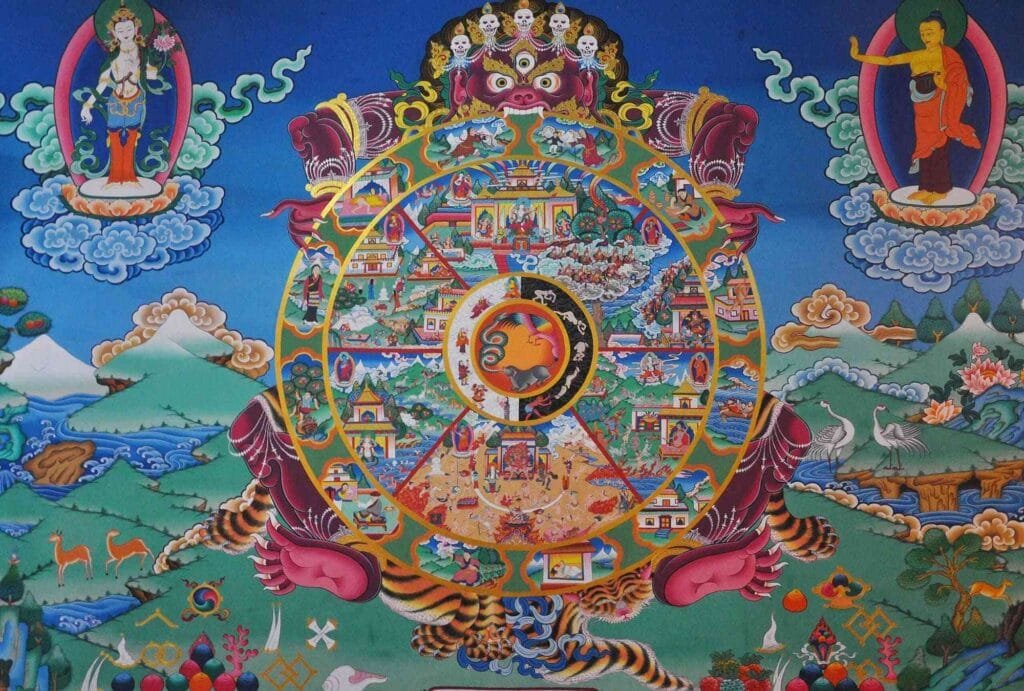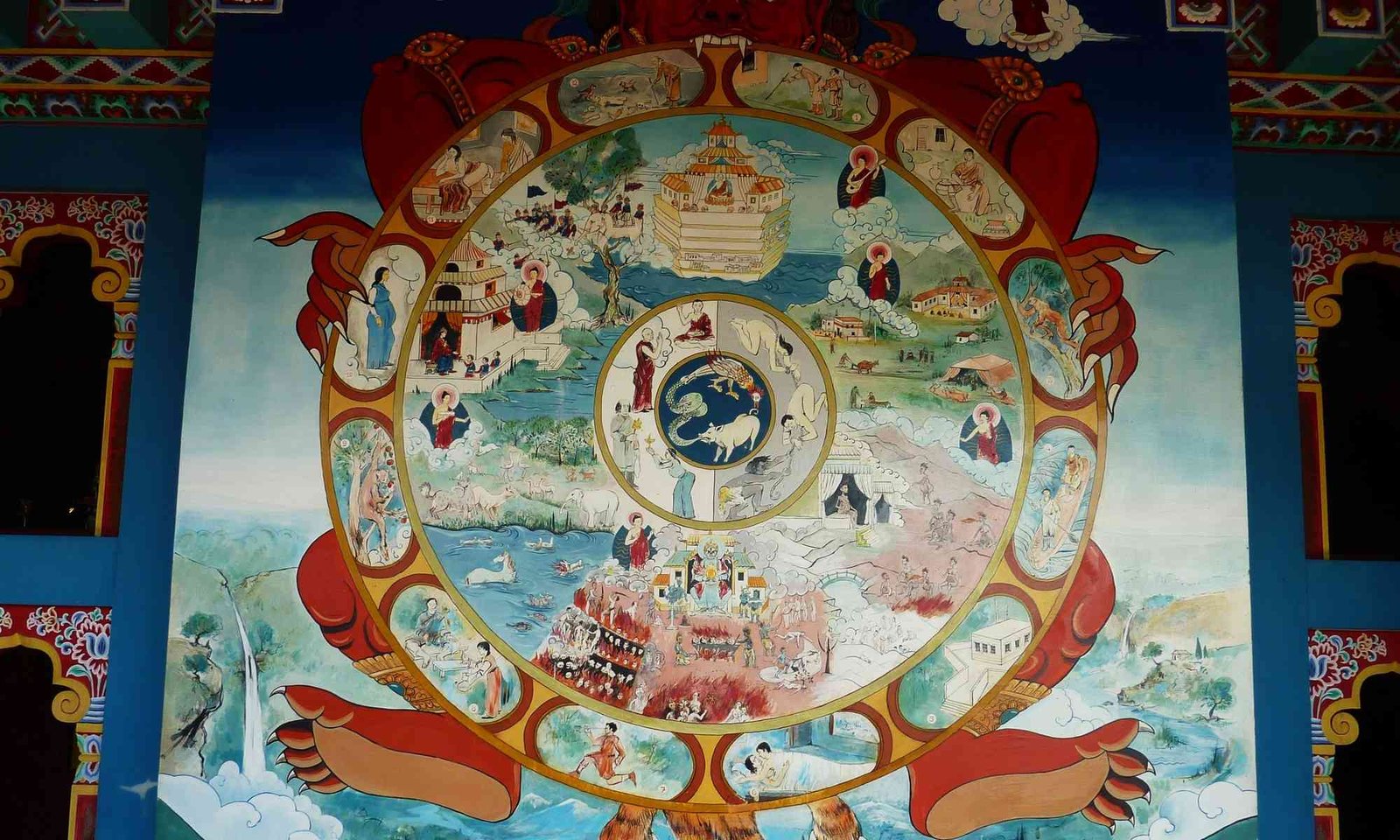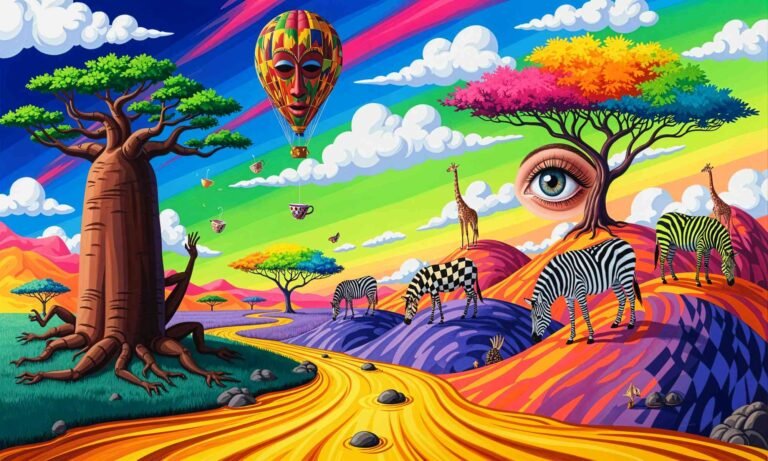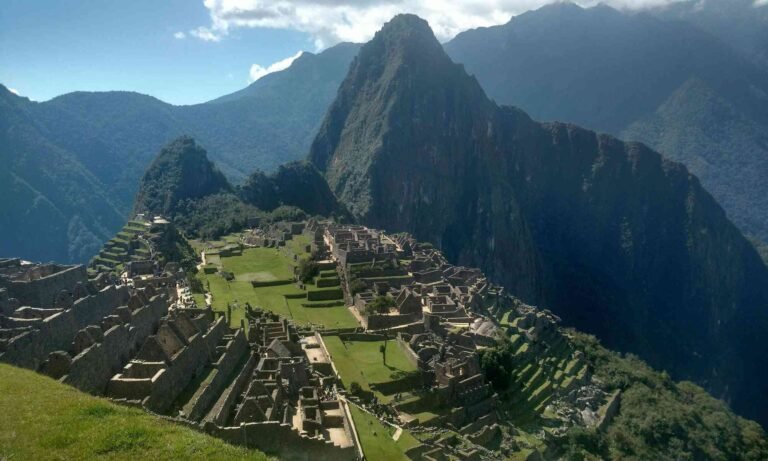The Concept of Saṃsāra
Samsara, a term derived from ancient Indian languages, signifies the cyclical nature of life, encompassing birth, death, and rebirth. In both Hinduism and Buddhism, it is viewed as a fundamental aspect of human existence. The concept is intricately associated with the idea of suffering, which arises from attachment to worldly experiences and desires. As beings traverse through the wheel of Samsara, they encounter various states of existence, each influenced by their actions, known as karma.
The cycle of Samsara is not merely a physical journey; it is also a spiritual one. Both Hindu and Buddhist philosophies assert that life within Samsara is indicative of impermanence and constant change. Everything experienced, from emotions to physical entities, is transient. This recognition of impermanence serves as a catalyst for many individuals to seek liberation from Samsara, striving instead for a state of enlightenment or Nirvana.
Attachment plays a crucial role in perpetuating the cycle of Samsara. Individuals often cling to material possessions, relationships, and even their identities, which ultimately leads to suffering.
This attachment creates a binding force, causing beings to all too often be reborn in realms of existence that may be pleasurable or painful. Consequently, the desire to escape Samsara motivates many to pursue spiritual paths that promote detachment and mindfulness. Moreover, understanding the dynamics of Samsara allows individuals to reflect on their own lives and the choices they make. The recognition that one’s actions and intentions contribute to the cycle of samsaric existence encourages a more conscious approach to life. By fostering compassion and wisdom, individuals can navigate through the challenges presented by Samsara while seeking pathways that lead toward spiritual awakening and release from the perpetual cycle.
The Wheel of Life
The Wheel of Life symbolizes Samsara, depicting rebirth and The Role of Karma in shaping existence. It highlights suffering, impermanence and the path to liberation, showing how past actions influence the present.
The cycle of birth, aging, sickness, and death sustains suffering (dukkha) driven by ignorance, attachment, and craving, highlighting life’s impermanence and the need for spiritual awakening. Buddhist traditions offer different paths to liberation:
- Theravada emphasizes mindfulness, ethics, and wisdom
- Mahayana focuses on compassion and guiding others
- Vajrayana incorporates esoteric practices for rapid spiritual awakening
Recognizing Samsara fosters self-awareness, encouraging wisdom, mindfulness and the pursuit of Nirvana.
The Wheel of Life: A Visual Representation

The Wheel of Life, or Bhavachakra, is a significant symbolic representation in Buddhist teachings, illustrating the intricate cycle of life, death, and rebirth known as Samsara. This compelling visual metaphor helps practitioners understand the interconnectedness of existence and the mechanisms of Karma. The Wheel comprises several sections that categorize various states of being, illustrating the paths one may traverse in the realm of existence.
At the center of the Wheel are the three animals: a pig, a snake, and a bird, which represent ignorance, aversion, and attachment. These fundamental afflictions perpetuate the cycle of suffering known as Samsara. Surrounding these core elements are six realms of existence – gods, demigods, humans, animals, hungry ghosts, and hell beings. This representation underscores the notion that one’s actions directly influence their experiences in each realm, reinforcing the concept of Karma, where good and bad actions yield corresponding consequences.
The outer rim of the Wheel is divided into twelve sections, which illustrate the Twelve Links of Dependent Origination. This framework elucidates the process leading to rebirth and suffering, emphasizing that ignorance leads to mental formations, which in turn results in consciousness, and this cycle continues until one breaks free through spiritual practice.
Additionally, the path toward liberation is depicted in the eightfold paths, which are essential teachings for overcoming ignorance and achieving Nirvana. These paths include right understanding, right intention, right speech, right action, right livelihood, right effort, right mindfulness, and right concentration. By following these guidelines, practitioners can cultivate a mindful life, acknowledge the impermanence of their existence, and ultimately transcend the Wheel of Life. Through the teaching of the Wheel, individuals are reminded of the importance of conscious living and the pursuit of enlightenment, which liberates them from the cycles of birth and rebirth.
“We spend all our energy and waste our lives trying to re-create these zones of safety, which are always falling apart. That’s the essence of samsara – the cycle of suffering that comes from continuing to seek happiness in all the wrong places.”
– Pema Chödrön
Insights into Nirvana
Nirvana is a central concept within Buddhism, epitomizing the ultimate goal of spiritual practice. It is often misunderstood as a state of non-existence or annihilation; however, in reality, Nirvana represents a profound liberation from suffering and the cycle of rebirth. Achieving Nirvana means transcending the desires and attachments that bind individuals to the cyclical nature of life, known as samsara. This state is characterized by the cessation of both physical and mental suffering, as one realizes the impermanence of life and the transient nature of all phenomena.
In contrast to the ideas of eternal bliss or unending pleasure found in various religions, Nirvana is distinctive in its focus on the extinguishing of craving and ignorance. While heaven in many faiths is portrayed as a place of eternal happiness, filled with rewards for virtuous deeds, Nirvana offers a different perspective. It focuses on the cessation of suffering rather than the pursuit of joy. The significance of Nirvana lies not in an everlasting state of bliss but in the profound peace that comes from liberation from attachments. It is a state of being that is fundamentally different from the extremes of suffering or transient joy.
Moreover, the attainment of Nirvana does not imply a destruction of self; rather, it reflects a deep understanding of the self’s illusory nature. The realization achieved through meditation and ethical living unveils the interconnectedness of all beings, allowing individuals to experience compassion and wisdom unclouded by personal desire. This unique interpretation stands in contrast to many other religious constructs, thereby highlighting Buddhism’s special approach toward enlightenment and the cessation of suffering. Understanding Nirvana is essential for comprehending the broader principles that govern Buddhist philosophy and practice.
“Searching outside of you is Samsara (the world). Searching within you leads to Nirvana.”
– Amit Ray
The Role of Karma
Karma is often described as a fundamental principle that governs the cycles of Samsara and Nirvana within various Eastern philosophies. Essentially, Karma refers to the law of cause and effect, which posits that every action has consequences that will manifest in the present or future. This concept emphasizes that one’s intentions and actions, be they positive or negative, will ultimately shape one’s experiences. Accordingly, good deeds may lead to beneficial outcomes, while harmful actions can result in adverse experiences, creating a cycle of rebirth and experiencing the fruits of one’s actions.
A common misconception surrounding Karma is the notion of fatalism – that people are doomed to a predetermined fate based solely on their past actions. In reality, Karma empowers individuals, highlighting personal agency in shaping their destinies. While our past behaviors may influence our current circumstances, they do not exempt us from the ability to create change through conscious choices. This understanding encourages a proactive approach to life, where individuals can strive for positive actions to cultivate favorable Karma.
Examples of Karma can be observed in everyday interactions.
For instance, acts of kindness, such as helping a neighbor or volunteering, can generate a ripple effect of positivity, leading to improved relationships and overall well-being. Conversely, negative actions, such as deceit or hostility, can breed mistrust and conflict in one’s personal and professional circles.
This illustrates how Karma is not merely a theoretical concept but a practical framework that influences human behavior and societal dynamics.
Thus, understanding Karma enhances awareness of one’s actions and their far-reaching consequences, emphasizing the interconnectedness of all beings. By making mindful choices, individuals can cultivate positive Karma, thereby forging a path toward spiritual growth and ultimately, liberation from the confines of Samsara.
“When you truly understand karma, then you realize you are responsible for everything in your life.”
– Keanu Reeves
What’s More
The posts in My Blog feature reflective, story-driven pieces rooted in personal and societal insights.
The topics in My Interests explore abstract, philosophical ideas and their cultural and societal impact.
👁️ 7,946 Views




















